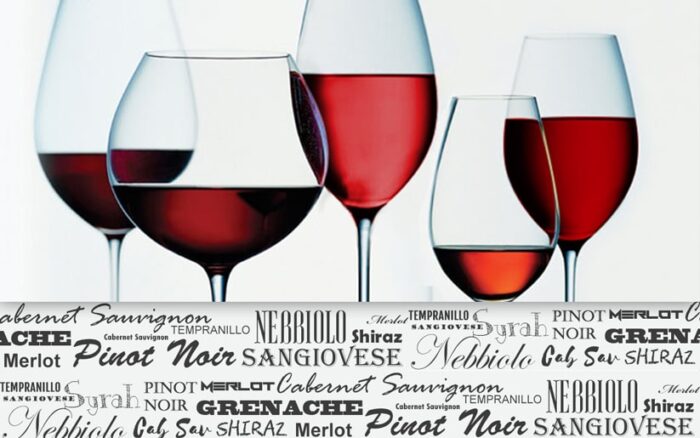
Red wine is a type of fermented alcoholic beverage made from grapes. It has been enjoyed for centuries, and continues to be one of the most popular wines in the world today. While it can be consumed on its own, red wine is often used for cooking as well as for pairing with food. In this article, we will explore what red wine is and how it differs from other types of wines.
Definition of Red Wine
Red wine is made from dark-colored grapes that are harvested when ripe and crushed to release their juice. The juice ferments with the skins still in contact with it, giving red wines their deep colors and flavors ranging from fruity to earthy or spicy. Red wines come in many varieties — such as Cabernet Sauvignon, Merlot, Pinot Noir, Syrah/Shiraz — each offering different flavor profiles depending on where they were grown and produced.
The alcohol level in red wine can range anywhere between 11% – 14%, though some fortified styles have higher alcohol content (15%-20%). Red wines usually have more tannins than white wines; these are compounds that give the drink a dry mouthfeel when consumed due to the presence of phenolic compounds found in grapes. The red wine price can vary greatly depending on the type and quality of the vintage.
Types of Red Wine

When it comes to red wine, there’s a lot of variety to choose from. From bright and fruity flavors to earthy and full-bodied, the range of options can be overwhelming. To help you make the best selection for your palate, let’s take a look at two types of red wine: varietal wines and blended wines.
1. Varietal Wines
Varietal wines are made from a single type of grape (i.e., Merlot or Cabernet Sauvignon). These grapes are typically grown in specific regions around the world—each with its own unique climate, soil type, and winemaking techniques—which gives each variety its distinct characteristics. Varietals tend to be medium-bodied with moderate tannin levels and acidity that ranges from high to low depending on the grape variety used. Common examples include Pinot Noir, Merlot, Cabernet Sauvignon, Syrah/Shiraz, Zinfandel and Malbec.
2. Blended Wines
Blended wines are created by combining two or more different grape varieties together into one wine (i.e., a blend of Cabernet Sauvignon + Shiraz = “C).
Factors Influencing Price of Red Wine

When it comes to purchasing a bottle of red wine, the price is often one of the biggest factors that affects a consumer’s decision. There are many different factors that influence the price of red wine and understanding these can help you make an informed buying decision. Two of the most important factors influencing the price of red wine include quality and production methodology.
1. Quality
Quality is one of the main factors affecting the price of red wine. Generally speaking, higher-quality wines tend to be more expensive than lower-quality ones due to better grapes being used in their production as well as longer aging processes or more specialized winemaking techniques. Quality also plays a role in how long you can store your bottles for since higher-end wines tend to be able to age better over time and may even increase in value if stored properly.
2. Production Methodology
Production Methodology is another factor influencing the pricing of red wines. Different methods are used when making different types and styles of wines with some being more labor intensive or requiring more expensive materials than others which results in them costing more on average at retail stores. Additionally, some wineries may offer exclusive methods or use rare ingredients which can further drive up their prices compared to those using cheaper or traditional techniques like oak barrel aging instead.
Common Price Ranges for Different Types of Red Wine

Red wine has been around for centuries and it’s still one of the most popular drinks in the world. With so many different types of red wine, it can be difficult to know which type of red wine is right for you. Knowing the different price ranges for each type of red can help you make an informed decision when shopping for your favorite varietal.
The first thing to consider when looking at price ranges is whether or not you’re looking for a table wine or a more expensive bottle. Table wines are usually more affordable and are typically under $20 per bottle. This includes lighter-bodied wines such as Pinot Noir, Merlot, and Zinfandel. These wines have fruity flavors that pair well with food, making them perfect for casual dinners or parties.
If you’re looking to splurge on a special occasion, then high-end reds may be what you need. Cabernet Sauvignon, Syrah/Shiraz, and Bordeaux are all considered premium options that range from $30-$100 per bottle depending on the region they come from and their vintage year (how old it is). These full-bodied wines feature powerful tannins that provide intense flavor.
Conclusion

The price of red wine can vary greatly depending on a variety of factors, including vintage, region, and winemaker. Generally speaking, red wines tend to be more expensive than their white counterparts due to their longer aging process and higher tannin content. However, there are still some great-value options available that offer exceptional quality without breaking the bank. Ultimately, it is up to the individual consumer to decide which option best fits both their budget and taste preferences.








